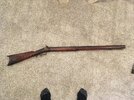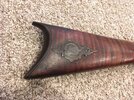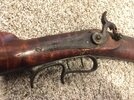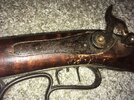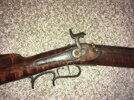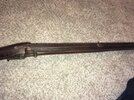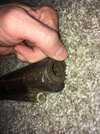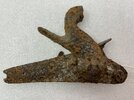Hi All,
I'm new to the forum but am looking for some help learning more about a handful of old long guns I inherited from my grandfather. I'll open a new thread for several of them. Thank you in advance, and if it would be helpful to have additional photos/info just let me know!
Thank you in advance!!
R
This first rifle is an old caplock - no identifying marks/stamps that I can find, although there is some fancy detailing on the lock.
I'm new to the forum but am looking for some help learning more about a handful of old long guns I inherited from my grandfather. I'll open a new thread for several of them. Thank you in advance, and if it would be helpful to have additional photos/info just let me know!
Thank you in advance!!
R
This first rifle is an old caplock - no identifying marks/stamps that I can find, although there is some fancy detailing on the lock.


